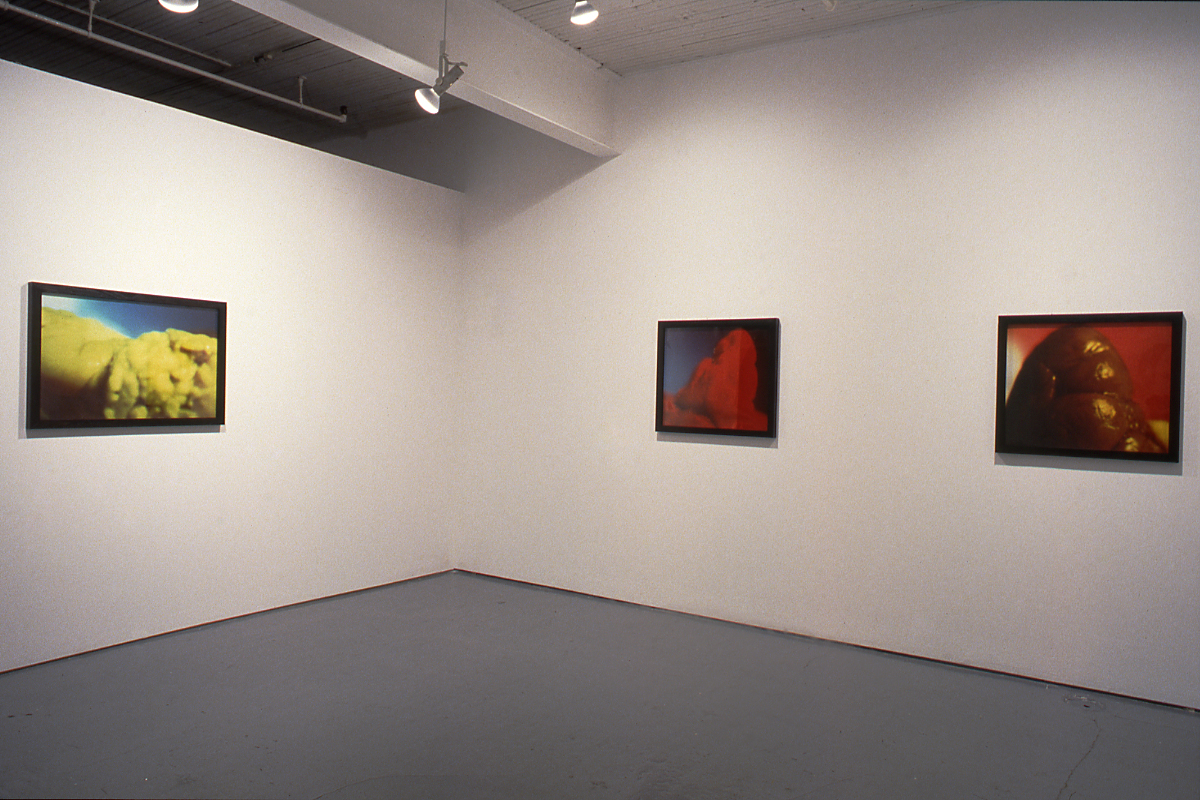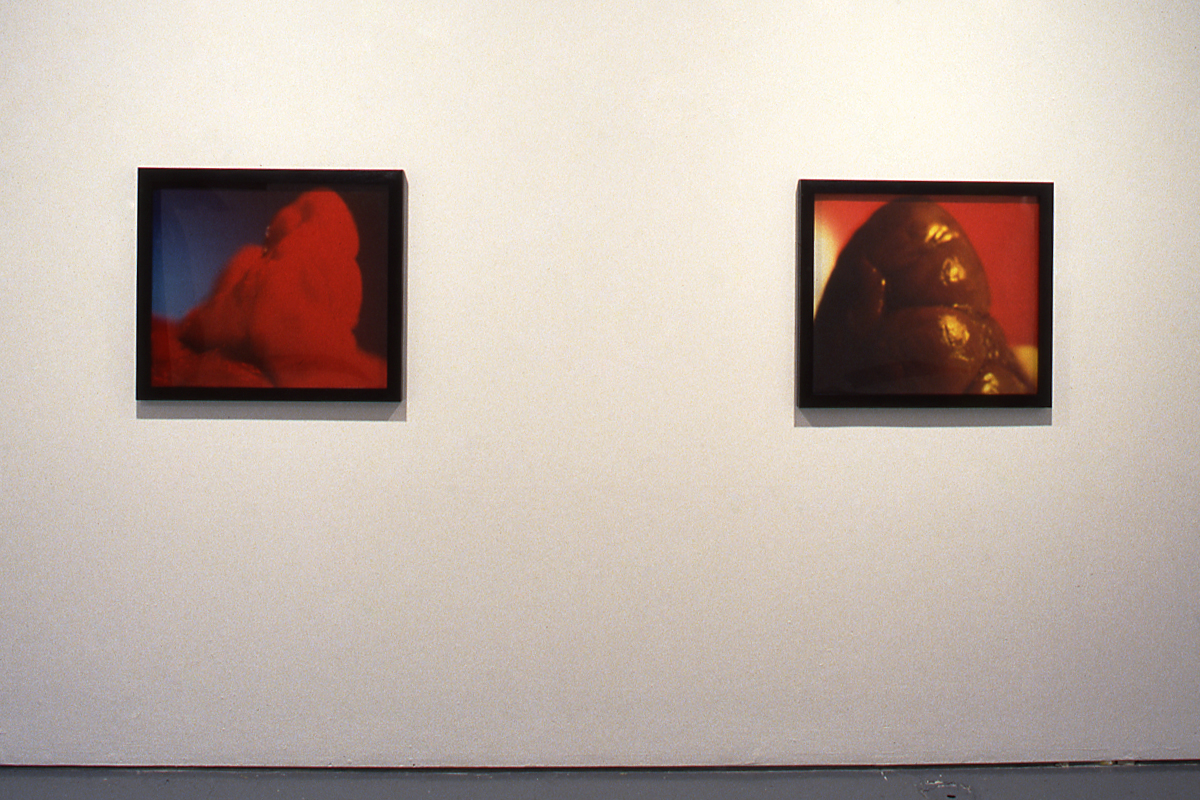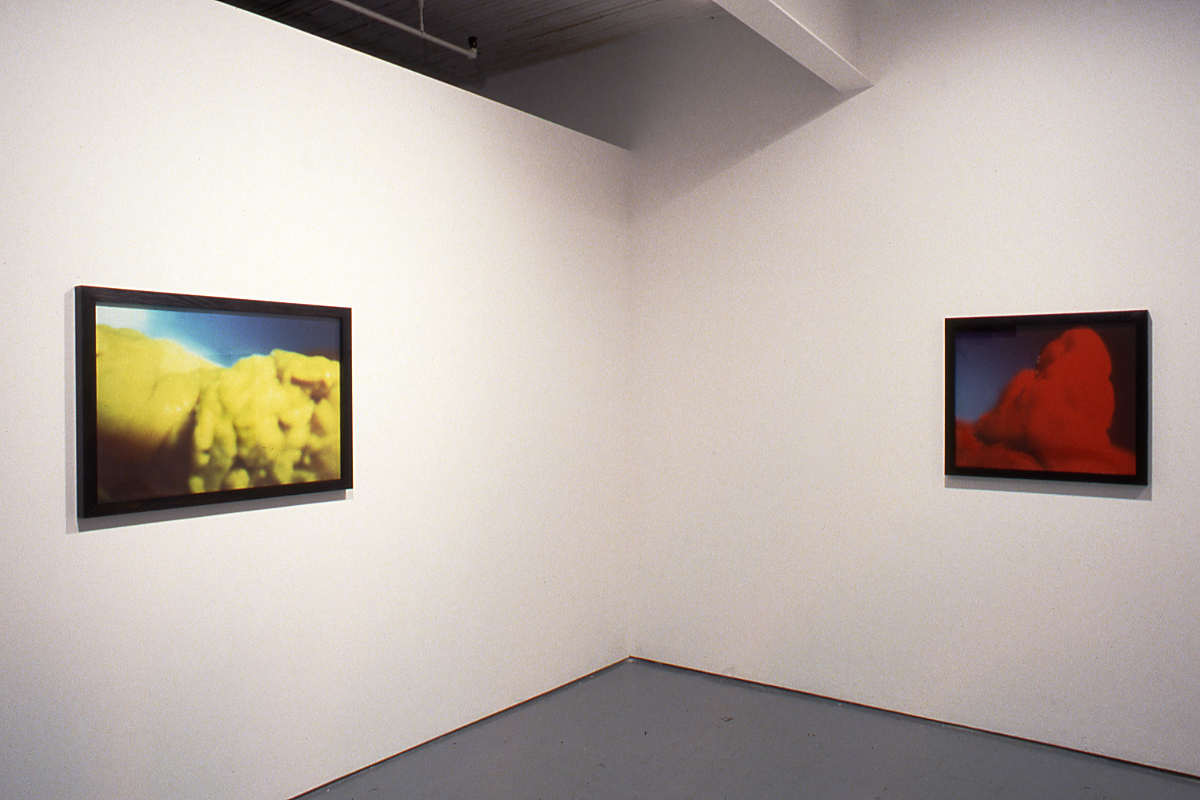The Project Room Series presents a number of exhibitions that investigate the recent history of local art.
Displaying lushly coloured visceral forms against surfaces so glossy that they seem wet, Rose Kallal's recent photographs create a provocative sense of organic ambiguity, fascination and dread. They suggest a dynamic polymorphous body, imagining sensuously folded flesh in saturated hues of glistening red and yellow. Though their association with the body is immediate, they are less likely to evoke discrete bodily parts, than spectacular landscapes of flesh against fantastical coloured skies. Their soft-focus ambiguity deliberately adds to the fascination of their seductive and repulsive tensions - appearing simultaneously familiar, yet disturbingly strange.
Though fully photographic in their detail, the images seem to document shifting, intangible phenomena which exist beyond the purview of western rationalism. Given its patriarchal belief in the stable and quantifiable identity of things, western society has historically imagined that through technology, it will achieve eventual mastery of the material environment. Nearing the end of the century, this utopian ideal appears both horrible and naively heroic: at best, quaint and anachronistic, at worse, brutally destructive and apocalyptic. Through several series of earlier works, Kallal has represented the concomitant anxieties associated with the rapid. transformations of science and technology specific to modernist culture. In her previous pin-hole camera series, she intentionally uses an anachronistic representational technology to document views of an equally archaic anticipation of the future - the modernist metropolis. Her red tinged images of the 1939 World's Fair grounds in contemporary decay, and other depopulated vistas of decrepit urban wasteland, seem to envision a post-technological time after society's apocalyptic annihilation.
In the series of oil paintings which followed, Kallal presented a nostalgic imagery of extraterrestrial landscapes and radiolarians - microscopic organisms shaped like early satellites. Referencing 1950s imagery, she again evoked the failed ideal of an antique future: one in which space-age technology held the transcendent promise of an escape from the problems of earthly existence, but delivered instead; only barren uninhabitable lunar landscapes.
Kallal's new photographs return to the body, only to find that there is no idealized solace to be found there is in her earlier photographs, these works employ technology as an agency of hallucinatory distortion, here truthfully revealing the body as an amoral site encompassing both bliss and danger. The liquidity and glistening wetness of their surfaces plays on a patriarchially trained revulsion at such lubrication. This slickness-allows for swift critical movement, offering up a series of slippery slopes which seem to dissolve just as they are about to be encountered. Like the pleasures and pains of physical experience - these mutations elude the stable closure of singular classification, directing attention instead to the endless thrill of plural and transformational identities.
- Sharon Brooks



